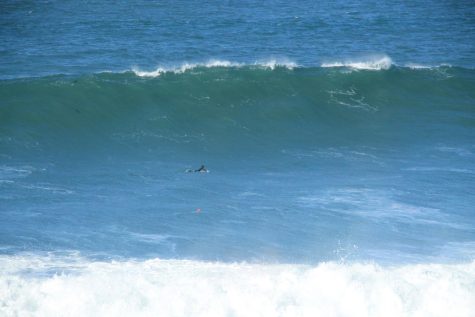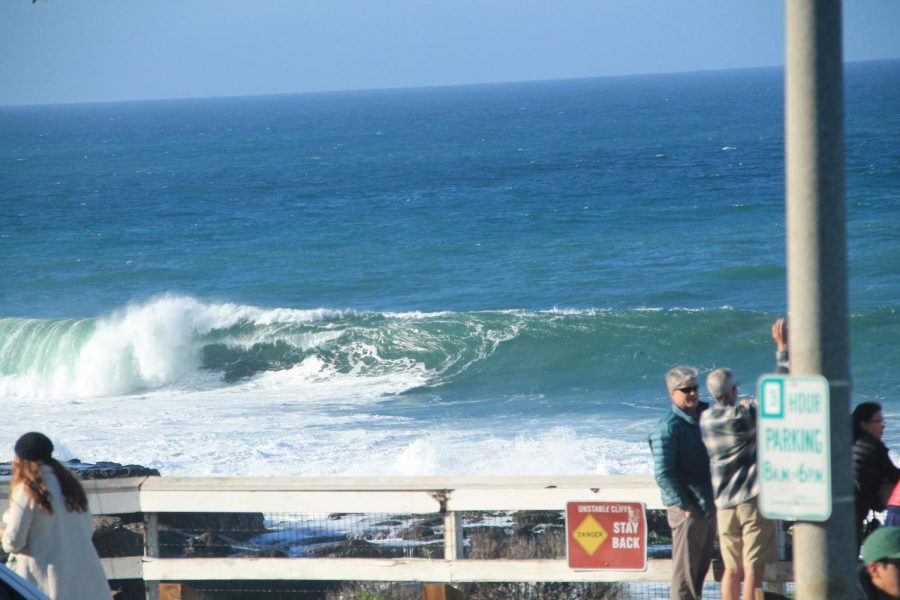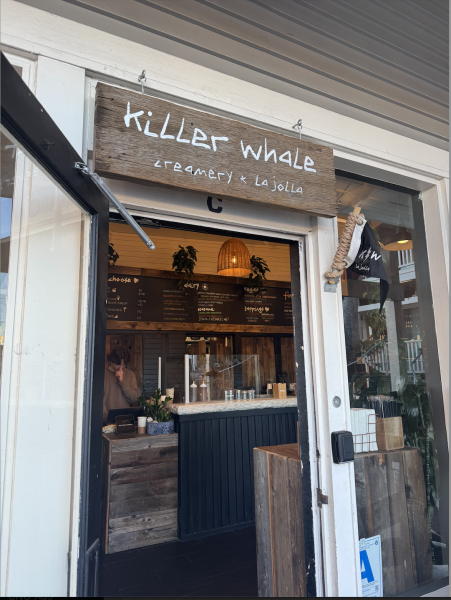All in Favor of the Pineapple Express, Or Not
California coastlines hit with the Pineapple Express cyclone’s massive waves and heavy rain
People crowd the La Jolla Cove on Friday, January 6, 2023, as waves up to 25 feet are breaking for one of the first times ever in the popular diving spot’s history.
So far in 2023, we’ve witnessed the life-changing injury of the Buffalo Bills safety Damar Hamlin, an explicit 60 Minutes interview with Prince Harry, the jackpot lottery pushing its prize over $1 billion, and especially California’s intense rainstorms causing extreme flooding and massive waves.
The rainfall started on New Year’s Eve and picked back up on January 5. San Diego, Ventura, Los Angeles, and Santa Barbara counties all received up to 16 inches of rain or more in a two-week span. This precipitation also brought winds up to 60 mph and severe flooding. In total, thousands of California residents have been forced to evacuate and even 20 people died.
The storm was caused by an enormous cyclone known as the ‘Pineapple Express’ serving as almost an atmospheric conveyor belt of moisture in the sky. With this cyclone comes atmospheric rivers in the sky with “long, narrow regions in the atmosphere that transport most of the water vapor outside of the tropics.” After a low-pressure cyclone like the Pineapple Express hits the west coast, it brings waves, floods, and rainfall.
As weather stations across the state were going crazy, managers of surf apps like Surfline were anticipating swells along the west coast in both Northern California and Southern California. In Santa Cruz, waves larger than 20 feet ripped apart the well-known Capitola Pier while also tearing a 1100-square-foot home from its foundations. Santa Cruz residents found the pier and the home drifting along the flooded streets.
At Mavericks Beach in El Granada, waves reached up to almost 60 feet. Being the most popular surf spot in California to surf big waves, many surfers collected their gun-shaped surfboards, boats and jetskis gathered to take them out, and other people met up to watch it all go down. Beaches in San Diego had sets averaging 20-25 feet.
With the thrill of riding some of the biggest waves to ever come to San Diego, there was also some danger too. La Jolla and all California State Lifeguards stayed alert, traveling from beach to beach with several requests to help when it was needed. For instance, early in the morning on January 6, at around 8 am a surfer was rescued on a jetski at Windansea beach when he was unable to make it out past the break. Because the tide was so high at the time, the surfer kept getting pushed into the rocks before he called for help.
Outside the Children’s Pool in La Jolla, one surfer also required lifeguard assistance. At this beach, there is a railing blocking the outside ocean from the seals guarding the beach. When the surfer needed help it was likely he came in contact with the barricade serving to be very dangerous. Hours later, the same railing on the barricade was damaged due to the waves’ high intensity.

The most popular spot of the day was La Jolla Cove, as many forecasters reported it having the biggest surf in all of San Diego. At dawn, sets hit 20 feet before dropping to 18 feet later in the day. Besides the waves being so big, local surfers excitedly lined up to surf the Cove because it was finally breaking. Bishop’s surf team captain Rory Engh (‘23) mentioned that she was excited to see the locals take on a new big wave spot. Other surf team captain Bennett Chodorow (‘23) said, “It was super cool to see it breaking and that big. I’ve never seen it like that in my life.”
Most of the time, the Cove serves as a home to hundreds of seals and sea lions with many divers and swimmers admiring the ocean life it has to offer. Divers and seals love to visit because it never breaks, except with the help of the Pineapple Express.
After the first weekend in January, the rain stopped for a few days before picking back up and adding almost seven more inches of rain this past weekend. Ocean swells weren’t as big as the previous weekend but more flooding and danger reached highways along the coast, causing many to close down. Although the Pineapple Express brought some positives to the west coast surfing community, others are angered by the potential billions of dollars it is going to take to repair the damage.

Camille Greenlee is a senior and a new staff writer for The Tower. She has hopes of becoming a sports journalist and can’t wait to write stories based...







